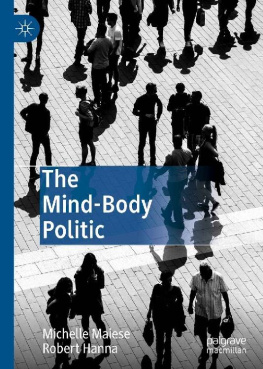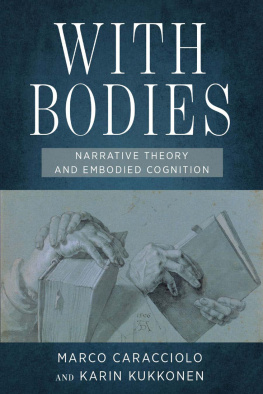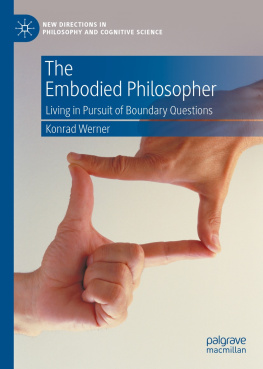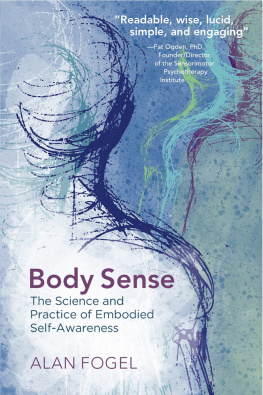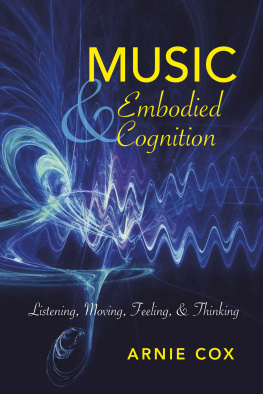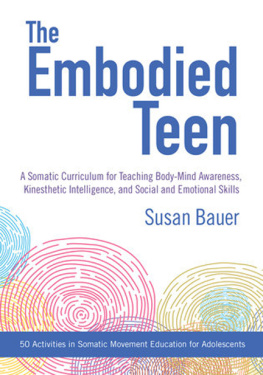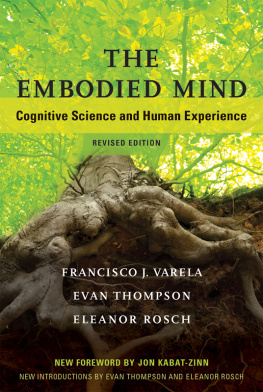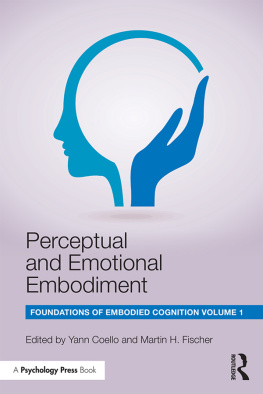Acknowledgments
I began putting together the proposal for this book in the summer of 2012, and this work continued into my research sabbatical during the Fall semester. I am grateful to Emmanuel College for granting me the extra time to work on the manuscript, and also to anonymous reviewers at Oxford University Press for providing me with helpful feedback. Thanks also to Charlotte Green and Martin Baum of Oxford University Press, and the International Perspectives in Philosophy and Psychiatry series editors for all of their help over the course of this project.
The starting point for this work is Embodiment, Emotion and Cognition, published by Palgrave Macmillan in 2011, in which I argued that research in embodied cognition and enactivism can help us to make sense of various psychological disorders. In this book, I further examine how disruptions to embodied consciousness can lead to a fragmented and alienated sense of self. Much of the material in Chapters , in particular, builds upon arguments presented in my earlier book.
Portions of Chapter also appear in How Can Emotions Be Both Cognitive and Bodily? published by Phenomenology and the Cognitive Sciences.
Some of the material from Chapter also appear in Thought Insertion as a Disownership Experience, published by Phenomenology and the Cognitive Sciences.
In addition, I am extremely grateful to Bob Hanna, Giovanna Colombetti, Grant Gillett, and Kaplan Hasanoglu for reading through the manuscript (in whole or in part) and helping me to make significant improvements. Thanks also to Nathan Wight, Theresa Tobin, and Peter Higgins for talking through some of the ideas with me and for their continued support; and to Paige Curran and David Palumbo for having so much confidence in me.
I also am fortunate to be part of a writing group at Emmanuel College. Jackie Alfonso-Barry (Psychology), Janese Free (Sociology), Christine Leighton (Education), Clare Mehta (Psychology), and I meet regularly to discuss our research projects and report on our progress. Their enthusiasm continues to motivate and inspire me.
I wrote large chunks of this book in various coffee shops in Boulder, Colorado. Some of my favorites include Ozo, Laughing Goat, and Trident. I was lucky enough to find a place to stay that is within walking distance from these great spots, and also very close to the foothills. Thanks to Anne Spalding for being an excellent host and for continuing to welcome me back to her home each summer; thanks to Robin Elowe for making me feel like I have family in Boulder; and thanks to the mountains for providing me with such gorgeous scenery for running and hiking.
I also am grateful to my family and friends for giving me many fun reasons to pull myself away from my computer. Some of my favorite people live a car or train-ride away, in places such as New Jersey, Connecticut, and Virginia. Others live a plane ride away, in places such as Wisconsin, Michigan, Colorado, California, and Washington. Then there are my Boston friends, who have helped make this bustling city feel more like home. Many of them are not philosophers, and yet they all have been kind enough to take an interest in this book. And last, but certainly not least, theres Nathan, my life partner and best friend, who provides constant encouragement. I am thankful to have such extraordinary people in my life.
Preface
Many philosophers approach the issue of personal identity by seeking to address how an individual can remain the same person or self over time despite various qualitative physical and psychological changes. Often such discussions raise questions about whether there even is such a thing as a person or self that persists through time, and some philosophers (e.g., Daniel Dennett) have argued that this notion of a self is a fiction or that self-consciousness is an illusion. Others have held that a self truly does exist, and that through self-consciousness we can be assured of the existence of our own self. In the context of many such debates, either the self is treated as some sort of substantial entity that exists (according to Realists about the self) or the self is treated as a mere myth that does not exist (according to Irrealists about the self). However, these two ways of understanding the self do not exhaust the relevant logical space of options.
In order to better understand what the self is, and what it takes for a self to persist over time, I turn in Chapter
Consciousness is subjective insofar as it necessarily involves an egocentrically centered, single point of view that is spatio-temporally located wherever and whenever ones body is located. It is experiential insofar as it also necessarily involves some or another kind of conatively affective content, based on primitive bodily awareness, which serves as the basis for all the sensory and representational content associated with sense perception and acts of thought. And consciousness belongs to a suitably complex neurobiological organism insofar as our mental lives are necessarily instantiated in all the vital neurobiological systems, organs, and processes of our living bodies, including the higher brain, brain stem, limbic system, nervous system, endocrine system, immune system, and cardiovascular system. Such an account entails that the conscious mind of a creature like us is not a thing, but rather a set of spontaneous capacities in a situated, forward-flowing, living body of a suitable degree of neurobiological complexity.
In Chapter , I will argue that not only the sense of self, but also the self itself are essentially embodied and rooted in our biological nature. What I call the Essentially Embodied Self Thesis (EES) says that our basic sense of self a) is immanently reflexive and pre-reflective; b) necessarily involves an egocentric, spatial, and temporal structure; c) is a natural outgrowth of our animate, neurobiological dynamics; and d) is rooted in the desire-based bodily feelings of caring. Our most basic way of being acquainted with ourselves is not through reflection, nor is there some pure self to which we can gain access. Moreover, the sense of self is not rooted in the phenomenal unity of ones various states of transitive consciousness (i.e., consciousness of objects). Instead, there is a background, peripheral, non-reflective awareness of self that is involved in all of ones conscious states, and which persists however disjointed the various intentional contents of ones experiences are. This is because ones immediate and most basic sense of self is grounded in ones unique continuing essential embodiment.
According to EES, self-awareness begins as an embodied, proprioceptive sense of self rather than as cognitive or psychological understanding, and some primitive and primary sense of embodied self is operative even in infancy ( terms the minimal self is a bodily sense of self, and it is sensorimotor subjectivity, our primitive mode of bodily awareness, which provides the foundation for the capacity to have a single point of view.
This first-order, direct mode of self-awareness, which I call sensorimotor subjectivity, necessarily involves an egocentric, spatial, and temporal structure, and is rooted in the globally oriented and dynamic spacetime structures of the human body. First, ones sense of self is necessarily egocentrically structured in , p. 124). In having subjective experiences, a conscious creature also immediately feels its own spatial presence: ones experiences necessarily occur here, wherever that might happen to be, and even if one does not know or is confused about where one is.
In addition, the sense of self is linked to the temporal structure of experience, and the fact that there is a usual sense of anticipation and familiarity that accompanies our conscious lives. By virtue of having an essentially embodied consciousness, one necessarily experiences oneself as occurring


